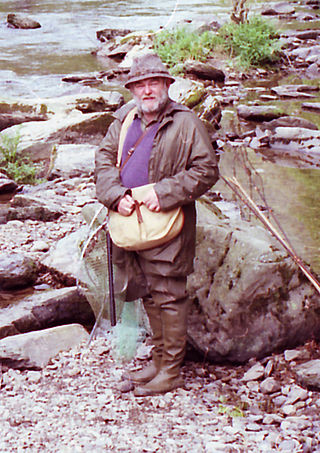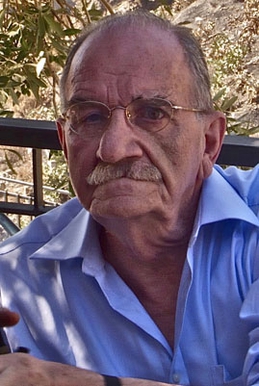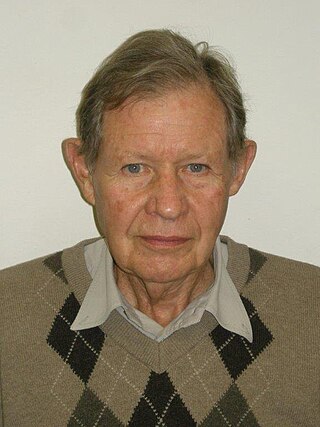
Geotechnical engineering, also known as geotechnics, is the branch of civil engineering concerned with the engineering behavior of earth materials. It uses the principles of soil mechanics and rock mechanics to solve its engineering problems. It also relies on knowledge of geology, hydrology, geophysics, and other related sciences.

Shear strength is a term used in soil mechanics to describe the magnitude of the shear stress that a soil can sustain. The shear resistance of soil is a result of friction and interlocking of particles, and possibly cementation or bonding of particle contacts. Due to interlocking, particulate material may expand or contract in volume as it is subject to shear strains. If soil expands its volume, the density of particles will decrease and the strength will decrease; in this case, the peak strength would be followed by a reduction of shear stress. The stress-strain relationship levels off when the material stops expanding or contracting, and when interparticle bonds are broken. The theoretical state at which the shear stress and density remain constant while the shear strain increases may be called the critical state, steady state, or residual strength.
Cohesion is the component of shear strength of a rock or soil that is independent of interparticle friction.

Critical state soil mechanics is the area of soil mechanics that encompasses the conceptual models that represent the mechanical behavior of saturated remolded soils based on the Critical State concept.

Peter Rolfe Vaughan ACGI, DIC, FREng, FICE, FCGI, MASCE, FGS, was Emeritus Professor of Ground Engineering in the Geotechnics department of Imperial College London.
The Rankine lecture is an annual lecture organised by the British Geotechnical Association named after William John Macquorn Rankine, an early contributor to the theory of soil mechanics.

John Boscawen Burland is an Emeritus Professor and Senior Research Investigator at the Department of Civil and Environmental Engineering of Imperial College London.

Geotechnical centrifuge modeling is a technique for testing physical scale models of geotechnical engineering systems such as natural and man-made slopes and earth retaining structures and building or bridge foundations.
Harry George Poulos is an Australian of Greek descent civil engineer specialising in geotechnical engineering and soil mechanics, internationally known as an expert on soil behaviour and pile foundations.
David Malcolm Potts is a professor of Analytical Soil Mechanics at Imperial College London and the head of the Geotechnics Section at Imperial College. He has been a member of the academic staff at Imperial College since 1979, responsible for teaching the use of analytical methods in geomechanics and the design of slopes and earth retaining structures, both at undergraduate and postgraduate levels.
Guy Tinmouth Houlsby FREng is Professor of Civil Engineering and former Head of the Department of Engineering Science at the University of Oxford. He specialises in Geotechnical Engineering and more particularly in offshore foundations.
Charles Peter Wroth (1929–1991) was a British civil engineer, a world pioneer in geotechnical engineering and soil mechanics. He led the design and construction of the Hammersmith flyover.
Kenneth Harry Roscoe (1914–1970) was a British civil engineer who made tremendous contributions to the plasticity theories of soil mechanics.

Malcolm David Bolton is a British soil mechanics engineer and professor of geotechnical engineering at the University of Cambridge.

Nicholas Neocles Ambraseys FICE FREng was a Greek engineering seismologist. He was emeritus professor of engineering seismology and senior research fellow at Imperial College London. For many years Ambraseys was considered the leading figure and an authority in earthquake engineering and seismology in Europe.

David William Hight is a senior consultant at the Geotechnical Consulting Group, a company providing high-level expertise in the field of geotechnical engineering and well known for bridging the gap between research and engineering practice.
David Muir Wood is an academic working in the field of geomechanics and soil mechanics, famous for having pioneered advances in mathematical modelling of soils, informed by experimental observation. The hallmark of his modelling efforts has been to formulate elegant models that capture the essence of the material response while being accessible to practitioners of Geotechnical engineering.
Jeremiah Edmund Bowden Jennings was a Professor in the School of Civil Engineering at the University of Witwatersrand (Wits), South Africa and its head of department from 1954 until his retirement in 1976.

Geoffrey Eustace Blight was a professor in the School of Civil Engineering at the University of Witwatersrand (Wits), serving twice as head of department.
Robert Scott Steedman CBE, FREng, FICE is a British engineer, former academic, TV presenter and standards expert. He is currently Director-General, Standards at BSI Group, the UK's national standards body.










